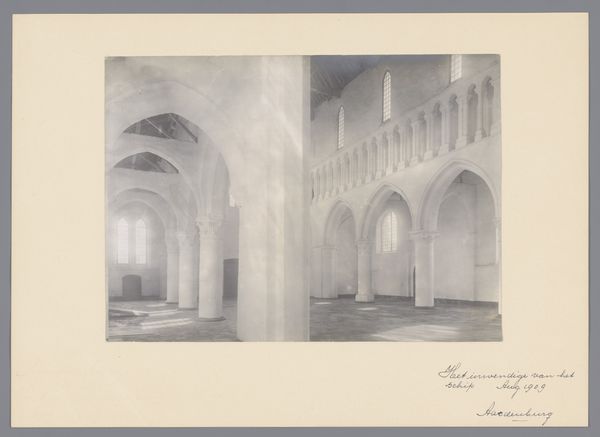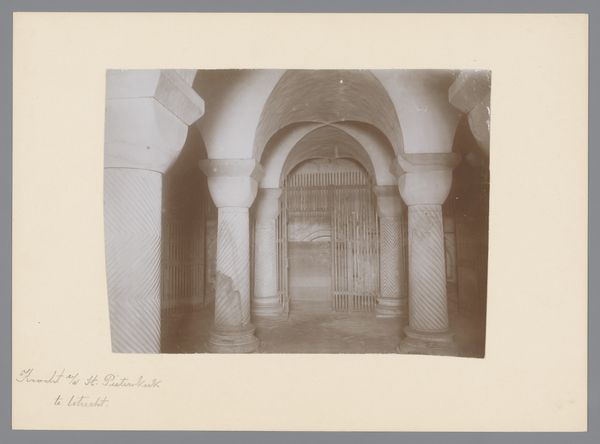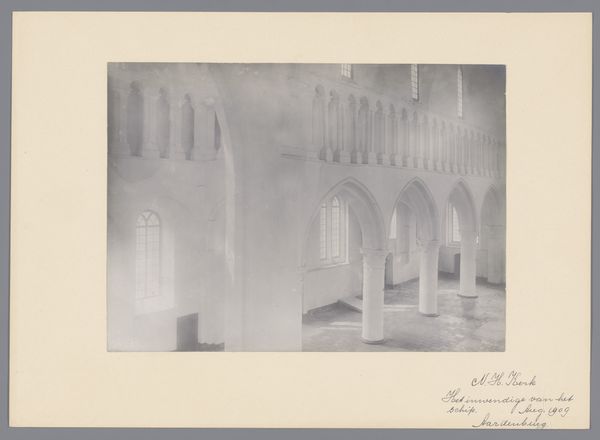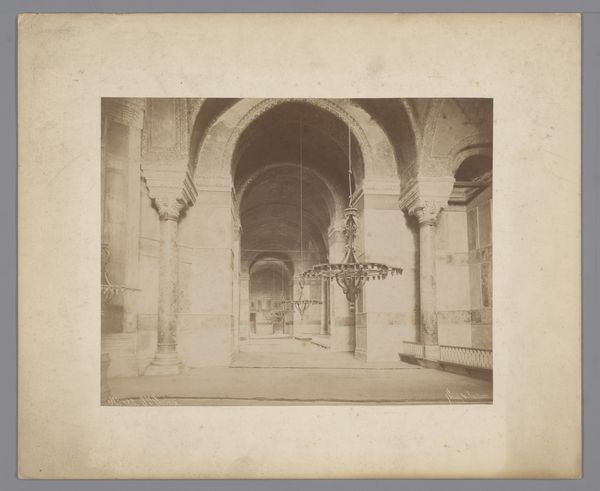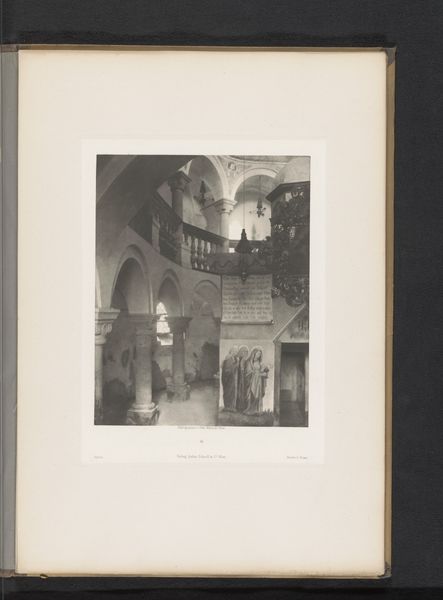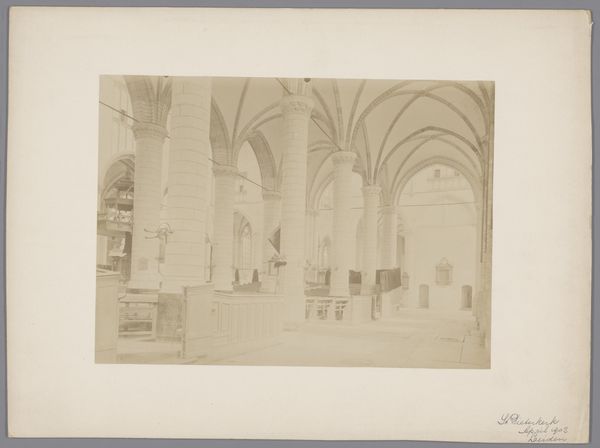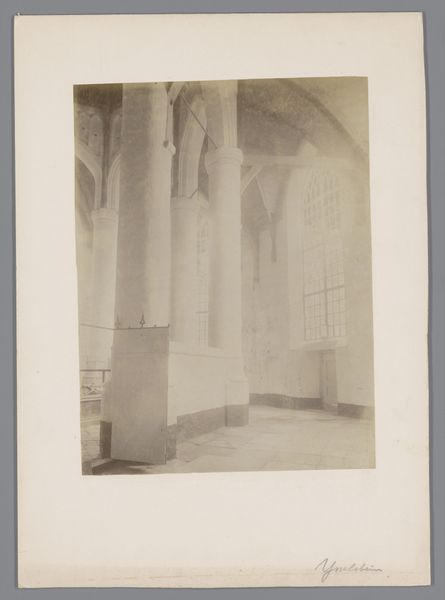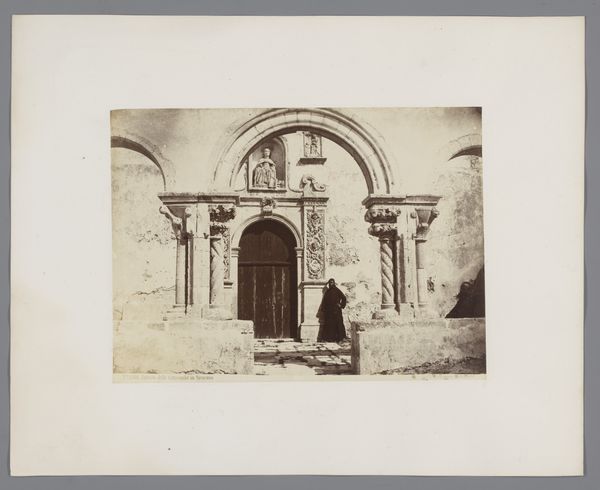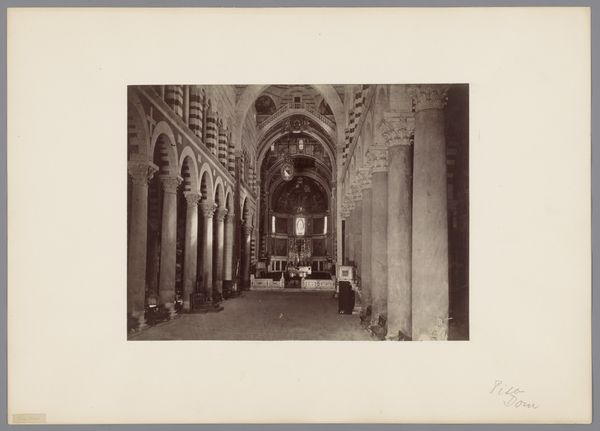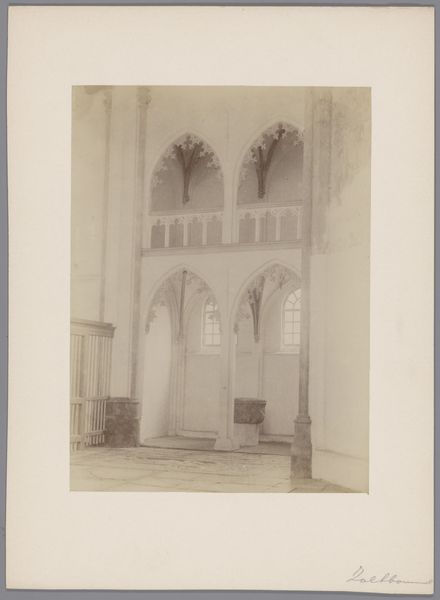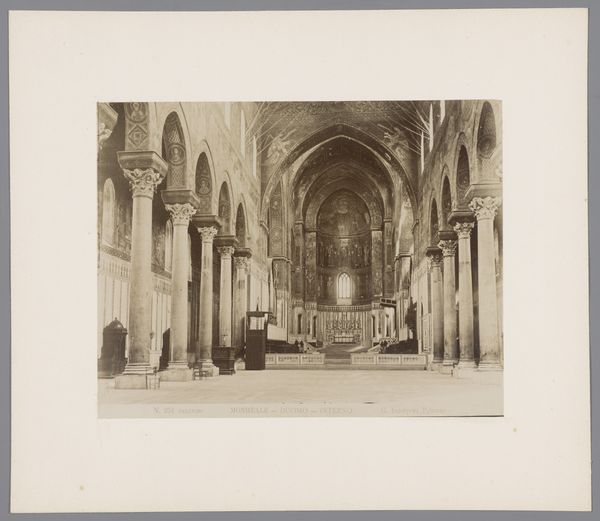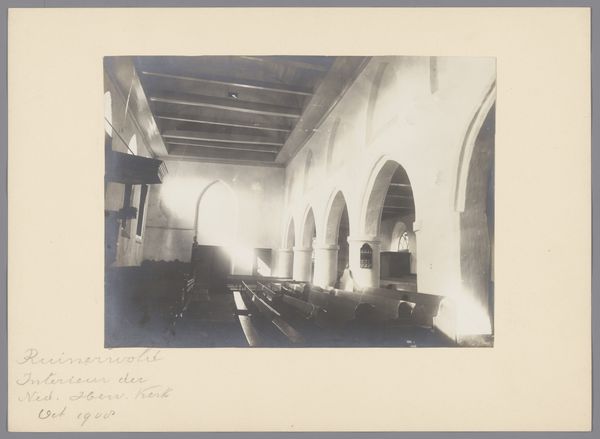
Interieur van een crypte in de Sint Lebuïnuskerk te Deventer c. 1875 - 1900
0:00
0:00
photography, gelatin-silver-print
#
toned paper
#
landscape
#
photography
#
gelatin-silver-print
Dimensions: height 122 mm, width 205 mm
Copyright: Rijks Museum: Open Domain
Editor: This gelatin silver print from Johannes Gerardus Kramer, sometime between 1875 and 1900, presents a very quiet, almost reverent, view of the crypt within Saint Lebuinus Church in Deventer. The composition, with its rhythmic columns leading to the altar, is striking. What historical factors might have influenced Kramer’s perspective when creating this work? Curator: Given the period, think about the rise of historicism in the 19th century. There was a surge of interest in preserving and documenting historical architecture. Photography, still relatively new, offered a powerful way to record these spaces. What statement do you think Kramer was trying to make about the role of the Church? Editor: Perhaps it was to highlight the endurance and timelessness of faith through the solid permanence of the building. Were there debates about how religious spaces should be presented to the public? Curator: Absolutely! The church had different meanings for different communities within the broader public. For some, this image may reinforce traditional authority of the church; for others, it might be seen as evidence of past oppression or a need for religious reform. This photo’s exhibition context – would it be in a church, a museum, or a public archive – heavily shaped its reception. Editor: That's fascinating. So, the power of the image lies not just in the aesthetic, but also in how it circulates and who controls that circulation. I had not considered that. Curator: Exactly! It really emphasizes how deeply entwined art is with the sociopolitical fabric of the time, something we often overlook. Editor: It has given me a new framework through which I might understand the cultural impact of art. Curator: Indeed, it encourages a critical awareness of what's being presented, and how power and public sentiment interplay through visual culture.
Comments
No comments
Be the first to comment and join the conversation on the ultimate creative platform.
